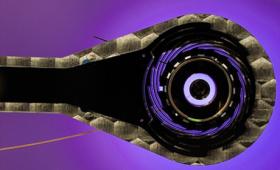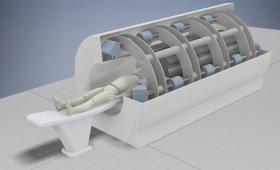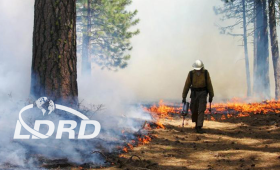Wildfires and prescribed burns, which can promote soil organic matter stability, may be an important nature-based climate solution to increase long-term carbon storage.
Science and Technology
in the News
Science and Technology
in the News
News Center

A multi-institutional team has proposed a framework for digital twin models of cancer patients.

NIF’s lasers delivered slightly more than the requested 1.9 megajoules (MJ) of laser energy at 440 terawatts of peak power for the shot that produced a historic 1.35 megajoules of fusion energy.

Omar Hurricane, chief scientist for the Lawrence Livermore National Laboratory inertial confinement fusion program, is a recipient of the 2021 Edward Teller Award.

A multi-institutional research team created a new co-culture device, dubbed a “porous microplate,” to study how metabolites in the water affect the growth of bacterial communities.

Among the factors contributing to the National Ignition Facility (NIF)’s record-smashing 1.3-megajoule (MJ) energy-yield shot on Aug. 8 was the quality of the high-density carbon (HDC), or diamond, target capsule used in the experiment.

Researchers have shown for the first time the potential for linear induction accelerators (LIAs) to deliver effective, targeted doses of “FLASH” radiation to cancer patients.

The authors describe inks for transparent elastomers that are formulated by matching the refractive index of silica and polysiloxanes.

The Laboratory is taking part in NASA’s first-ever planetary defense test, which deliberately collides a spacecraft into an asteroid called Dimorphos.

A Livermore team has won the first-ever Best Reproducibility Advancement Award at the 2021 International Conference for High Performance Computing, Networking, Storage and Analysis.

